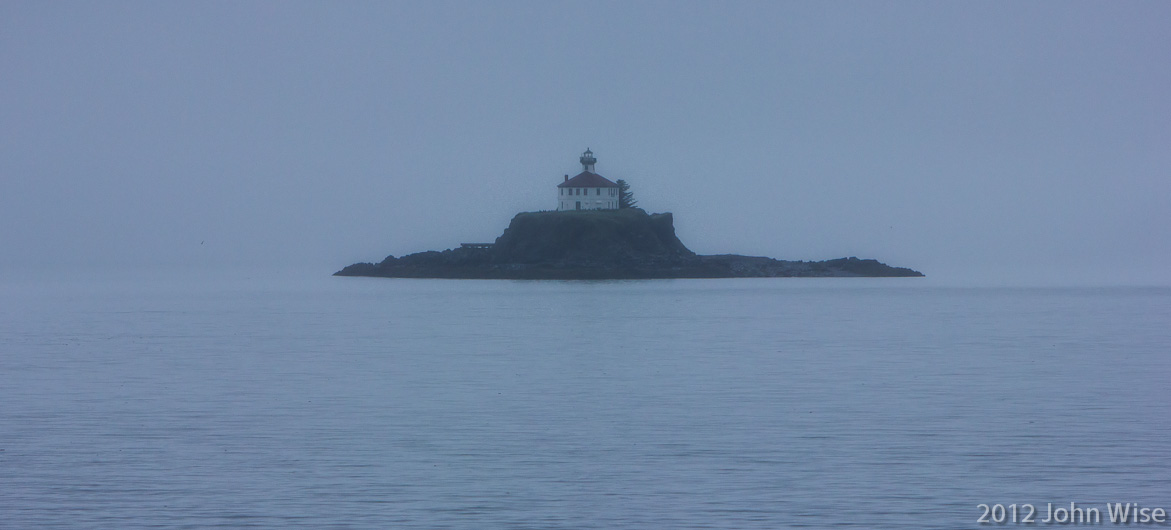
This trip to Alaska is more than just a vacation; we are getting started on another big adventure. While today is a part of the journey, it is really about getting into place for the action to get underway. This wasn’t a spur-of-the-moment, “Let’s get out and do something” kind of trip either, and NO, we are not here for a cruise! Planning for our introduction to Alaska started last summer with us weighing options between two different rivers and available dates. We ended up opting for the Alsek River over the Tatshenshini River, which is just a mountain range from where we are heading today. We start early and take a shuttle to the dock, where we will board a fast catamaran operated by the Alaska Marine Highway for our two-and-a-half-hour ride up the Inside Passage. Fog obscures the view that we are certain is nothing short of spectacular, but those sights are not to be seen by us today and will require another visit to delight in its certain beauty.
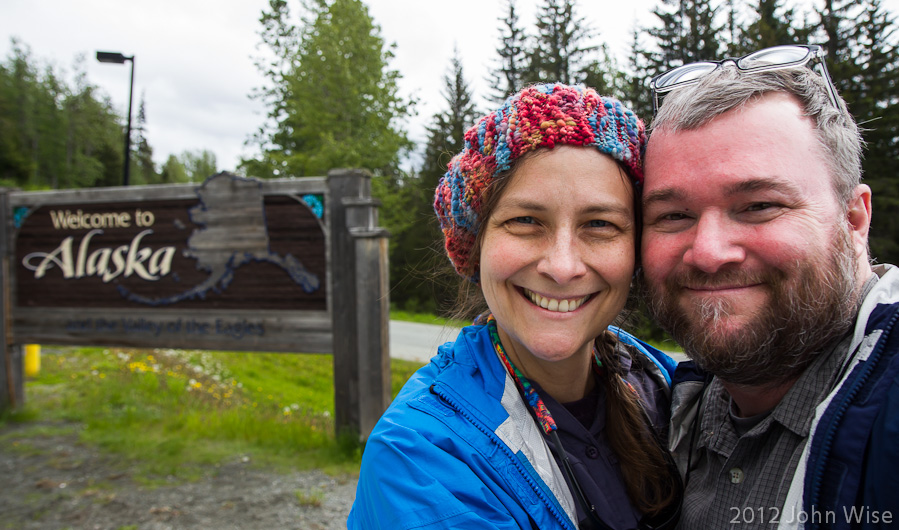
We dock in Haines and are greeted by Andy from Chilkat Guides. Andy is the company rep I’ve been talking to for the past year about this grand outing. A few minutes later, with our gear loaded on the van, we were on our way to the company warehouse. Some of the other passengers we’ll be traveling with are already here; some are yet to arrive. A few minutes later, a big truck pulls up, and out steps Bruce Keller, one of our boatmen. This is not just any old boatman either; Bruce was with us on our 18-day dory trip down the Colorado River through the Grand Canyon a year and a half ago. He is here at our request; after all, it was Bruce on Day 1 of that Grand Canyon adventure who told us a story about a Tatshenshini/Alsek trip he had been on in years past. The flames of our curiosity were stoked. There’s another reason we wished for Bruce to join us here, but I’ll get to that later.

Once all of us guests are assembled, the briefing begins. We are introduced to our other two boatmen; our trip leader is Shaun Cornish, who also goes by the nickname “Corn,” and next is Martha Stewart – no, not that one. Dry bags are handed out for packing our gear into, along with a sleep kit, and fisherman’s rubber overalls and jackets. Packed up, it’s time to hit the road on our school bus. Not so fast; we still need heavy rubber boots and felt liners to keep our feet dry and comfy once we get to the river, that, and some alcohol. Once that’s done, we are ready to get underway and drive north up the Haines Highway. A peculiar situation occurs on this type of river trip; we do not start our river journey in Alaska but in the Yukon Territory of Canada. The river will take us out of the Yukon and into British Columbia before shoving us across the U.S. border in the middle of nowhere some days further downstream. But we still have to check in with customs, so at the U.S. / Canadian border, we first file into the U.S. crossing station and surrender our passports to check into the U.S., although we haven’t even left yet. Then it’s time to check in with Canada; once more, the passports are handed over, and we wait a few minutes. We are clear and, again, are heading up the highway.
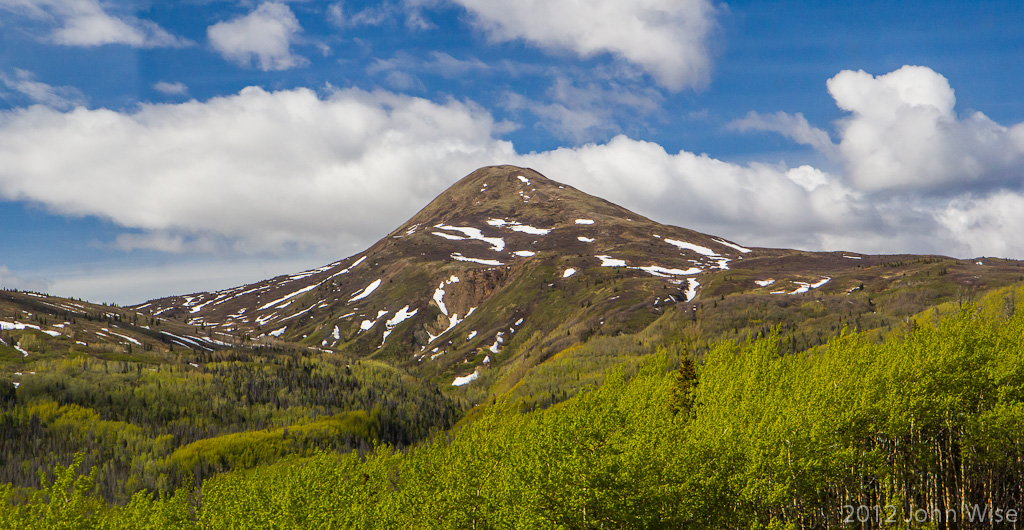
The trek out of Alaska and the way into the Yukon are well deserving of all the superlatives offered by the many travel writers and poets who have attempted to convey a sense of the beauty that exists within this landscape. Words like “heavy,” “large,” and “expansive” quickly come to mind. “Overwhelming” soon tramples the senses, leaving me to shake my head in disbelief that I am even here. I want to feel cheated that we are not stopping at every pullout to stand in awe of all of this, but I understand that we are on our way to something really big.
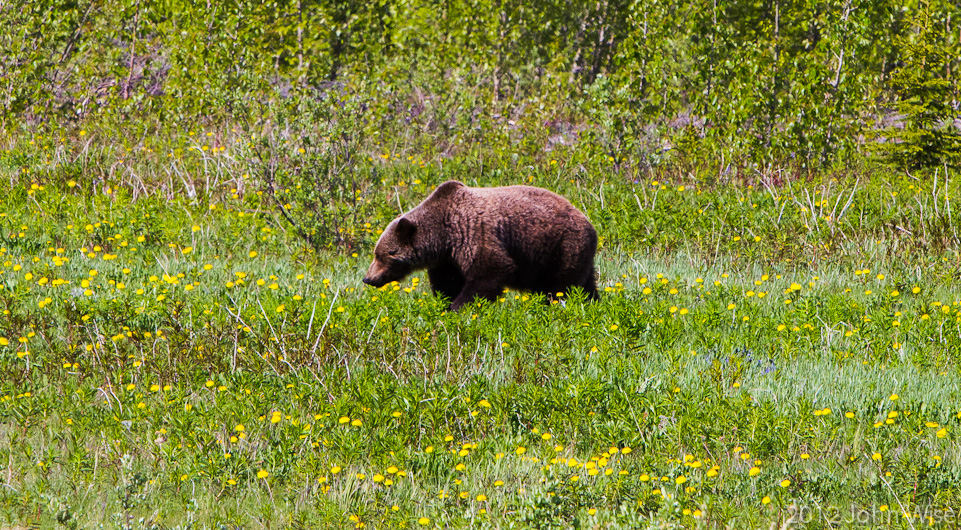
Not to say we can’t stop, and after spotting a grizzly bear, well, that demands we pull over. Oblivious to our presence and not caring a lick about our need for photos, this famous lumbering creature turns his back on us and wanders away from the meadow it was grooming to disappear into a thicket of trees. As far as wildlife was concerned this day, the bear would be the only encounter we’d have. Like the bear, we, too, need to keep moving.
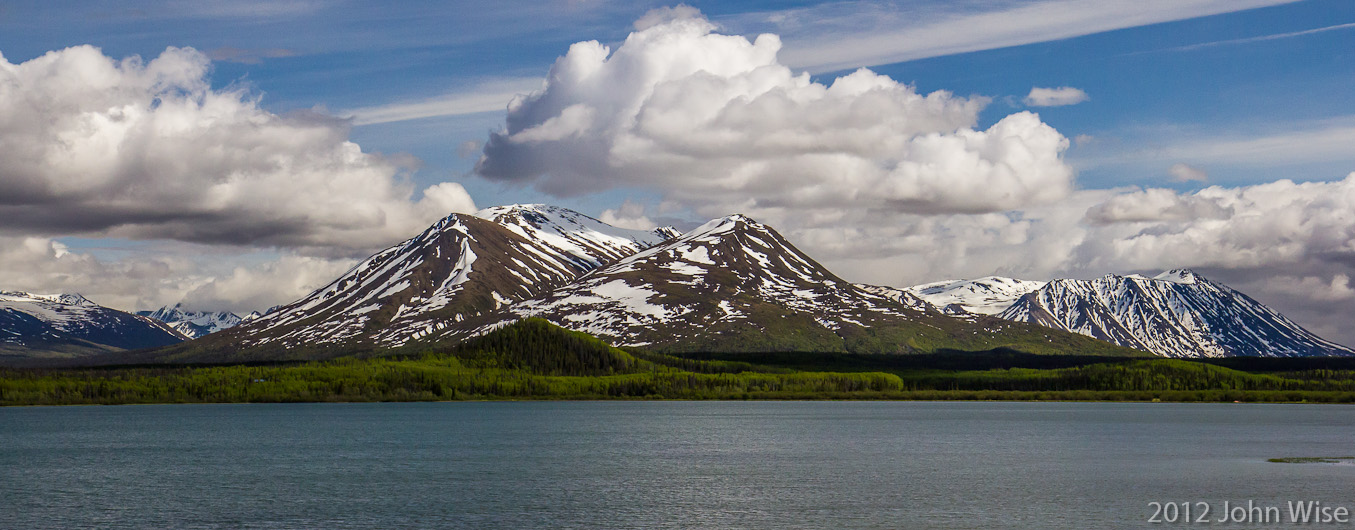
Photographing this environment is difficult. Clouds change quickly, and the land is so expansive that getting it “all” into frame becomes an exercise in frustration. If I were driving and getting to a destination at any particular time was not a factor, I would pull over every two minutes to insist that this was going to be the photo that would define our trip. Instead, I frantically shoot photos out of the window of the school bus and assure myself that I am coming back someday to linger while we mosey down the road.
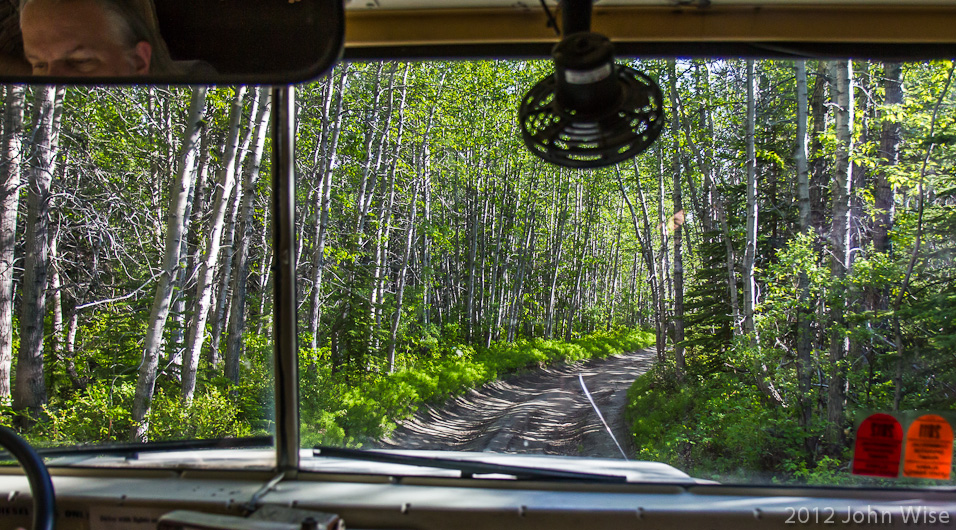
It’s already 5:00 pm by the time we leave the road near Haines Junction for a bumpy ride down a narrow, poorly maintained scratch into the earth. It will take 90 minutes on this rut to travel just 5 miles. The adventure has now begun. Just as quickly, it nearly comes to a standstill. Flowing water goes where it wants to out here, and when it does so in random ways, it can cut banks into the gravel, and that’s just what our bus got stuck on. But we are traveling with pro’s and in an instant, Corn has us off the gravel bar and bumping wildly on our way to our campsite.
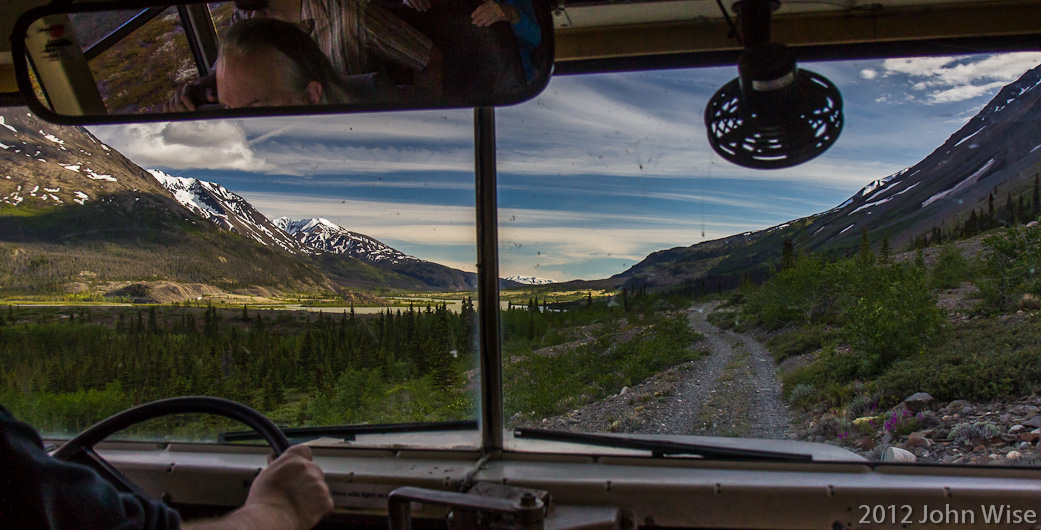
Onward we crawl. From this location back in 1850, we would have been submerged below a very large lake. In 1725, Lowell Glacier surged forward, creating a temporary 125-year dam that blocked the flow of the Alsek River. During those formative years, a lake over 30 miles long had collected, until in 1850, the glacier broke. When those waters were released, a massive flood scoured the landscape clean as it made its way to the Pacific about 150 miles downstream. The shoreline of that lake can still be seen in the mountainsides next to our route.
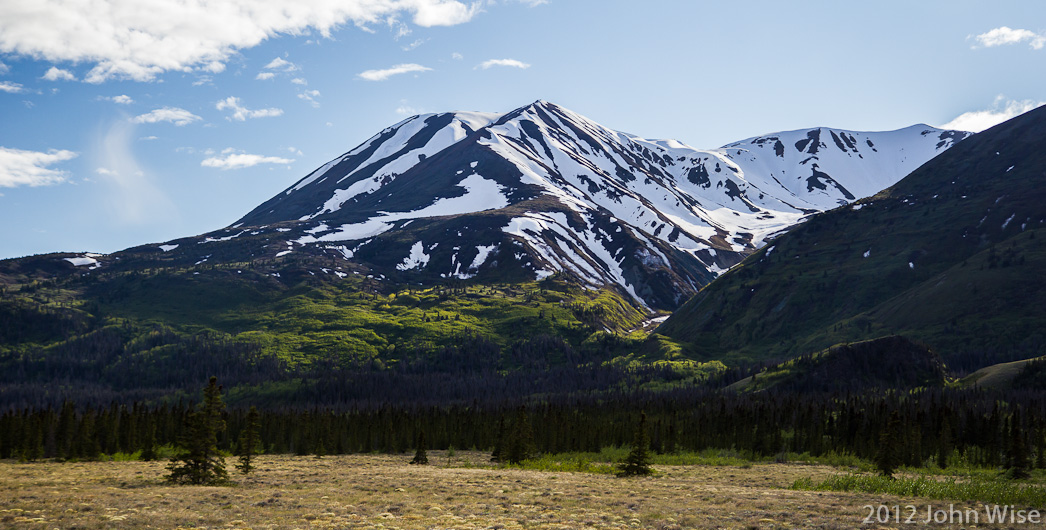
We have fallen in love with the terrain. Pinching ourselves will not wake us from this dreamscape. It is now incomprehensible how this can get any better. The idea that we are just at the beginning of a two-week rafting trip down a wild, infrequently traveled river only builds the sense of excitement that tingles the eyes and accelerates the heart with anticipation. As it was with our rafting trip down the Colorado, we cannot fully comprehend that we are so fortunate to be here, but so it is. Shortly, we will exit the bus. Our gear will be thrown onto the sandy soil, and we will, from that point on, only move further and further away from civilization and the modern world. We are entering a place where few dare enter, a primitive land lost in time, carved during the epoch known as the Pleistocene. Do not cue Twilight Zone music here.

What happened? Were we afraid that in a space so large, we would feel isolated, distant, and alone? Maybe the others thought I had made a sound judgment when scouting the location to set up the first tent. I had chosen this spot for Caroline and me because we were camping close to some obvious runoff that had poured over this drainage in the last few days, and this particular location looked to be an inch or two above the rivulets that can be seen in the bottom of the photo. Still, I wasn’t so sure about my logic and wondered if we should have searched for higher ground. I was sure the others would after having witnessed my poor judgment. No one else pursued that line of thought, though; they simply huddled around us. I agonized about moving the tent to find some ‘open’ space but was certain that would have been perceived as anti-social. On the other hand, who needed a tent when the plan was to stay up all night? To experience a 24-hour day seemed like a great idea, before a full stomach after dinner changed the equation.
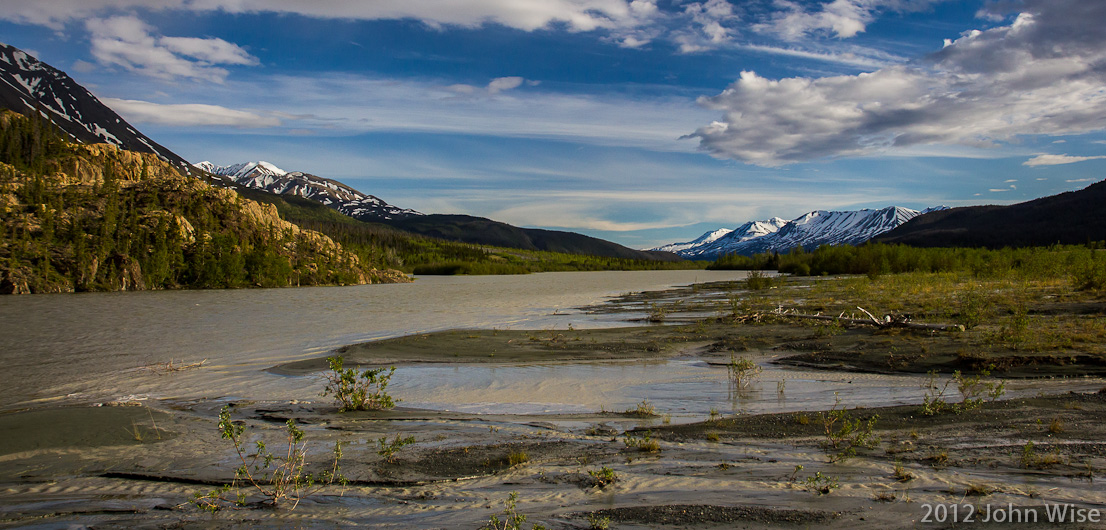
This is the direction we’ll travel in the morning. Three inflatable rafts, three guides, twelve passengers, and 184 miles between us and the ocean. What is it that lies in front of us? What kind of wildlife will we see? Will a rapid spill of one or more of the rafts and its human cargo into these icy waters? Might we witness calving glaciers or rolling icebergs? Standing on this shore, there are no answers, but there is an abundance of curiosity, trepidation, enthusiasm, and outright bewilderment. Today, we have placed ourselves at the precipice of adventure, whose grandeur exceeds our ability to comprehend even a fraction of what’s to come. It will take months, if not years, into the future to fully appreciate where this river will have taken us.
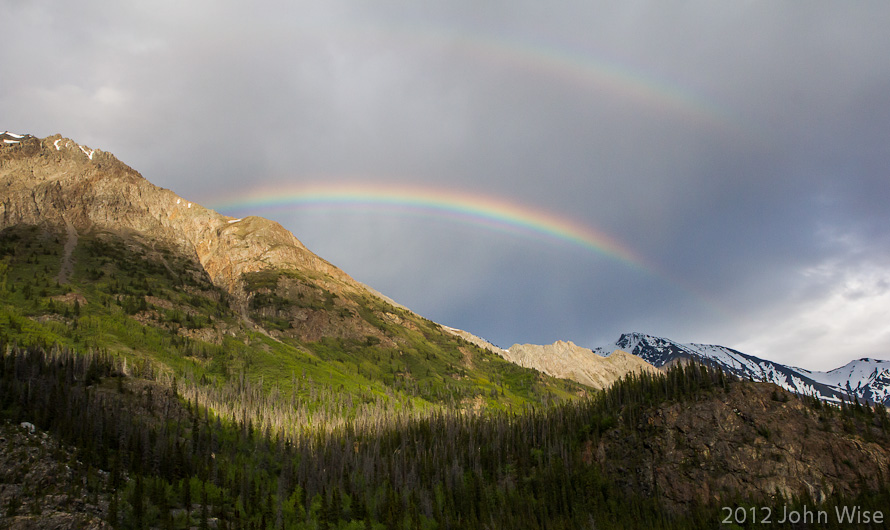
The last act of this momentous day occurred under a rainbow. At the beginning of this day’s recounting, I mentioned there was more to the story as to why it was important for us to have Bruce along as one of our guides. It was here on this day next to the Alsek that I presented Bruce with the first copy of my book titled “Stay In The Magic.” One month following the completion of our November 2010 Colorado River rafting trip, I took the opportunity to phone Bruce. Just prior to leaving the Grand Canyon, the boatmen told us that the worst part of these big river trips was about to begin: the phenomenon known as re-entry. Upon returning to “normal” life after an extended stay in the amazing, it happens that what was once normal and routine now seems out of place and peculiar, at best. We were reassured that this would pass after a few days. Well, there it was a month later, and Caroline and I were still deep in the Grand Canyon and were not making a very elegant departure from the experience we had marveled at. It was towards the end of that phone call that Bruce reassured me that we were truly lucky, that we should enjoy our extended stay in those memories, be happy that they didn’t disappear moments after our return, and that we should “stay in the magic.” At the time, I didn’t know yet that I was writing something that was going to go beyond one of my usual blog entries. As my writing continued and I realized that I was indeed on my way to authoring a book, I voiced a rhetorical question to Caroline one day, “I wonder what I’ll call this if I ever finish it?” Her reply: “What about that phone call with Bruce a couple of months ago where he told you to, “Stay In The Magic!?” And that is where we have stayed, in the magic.